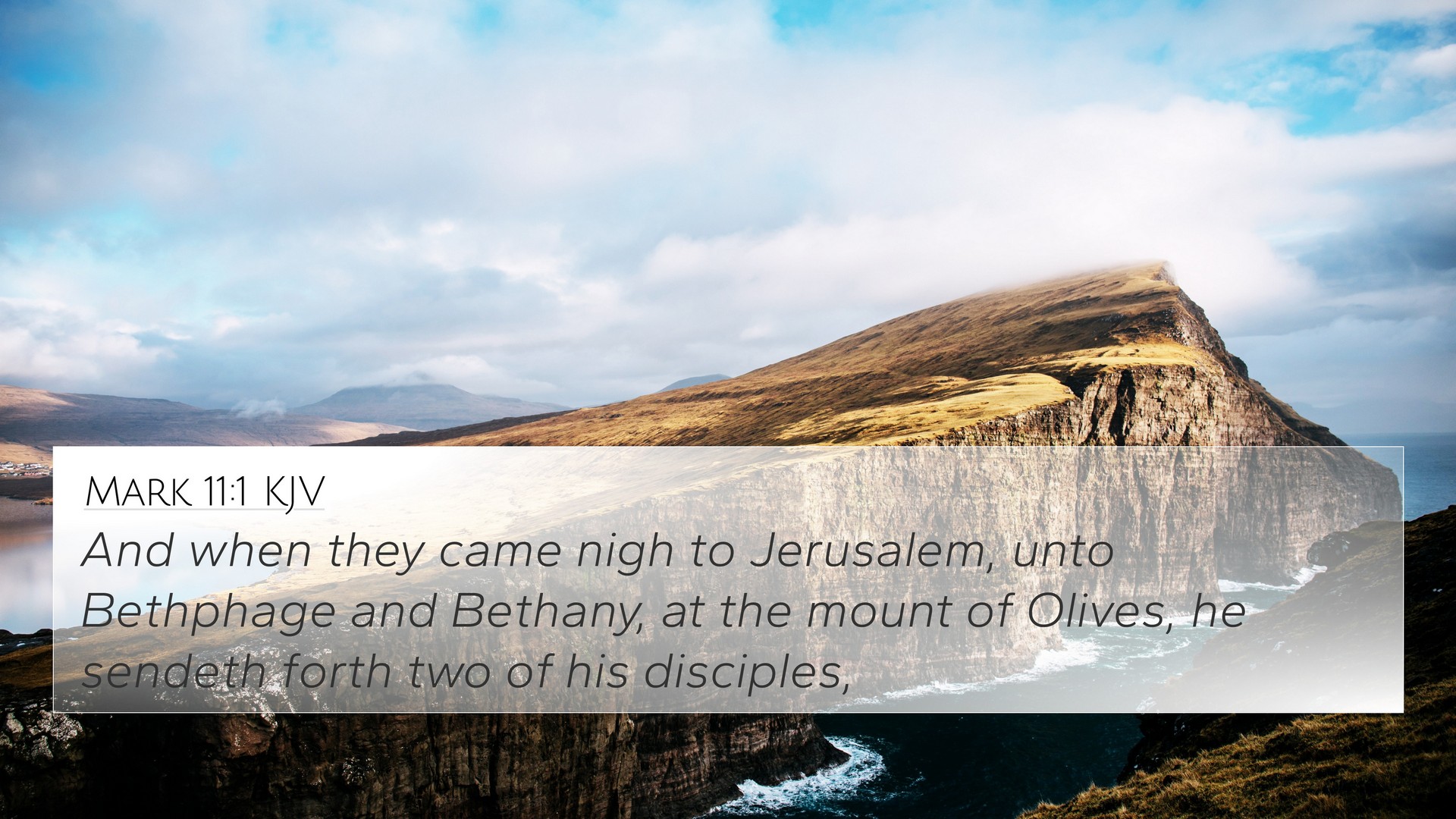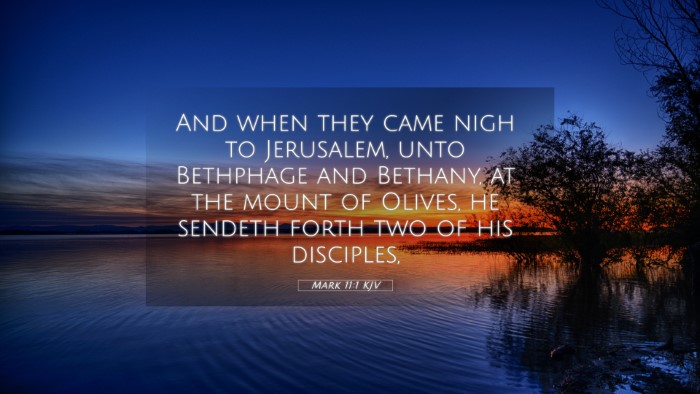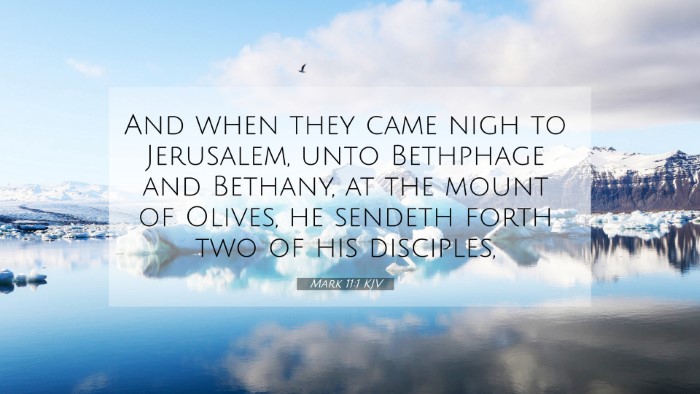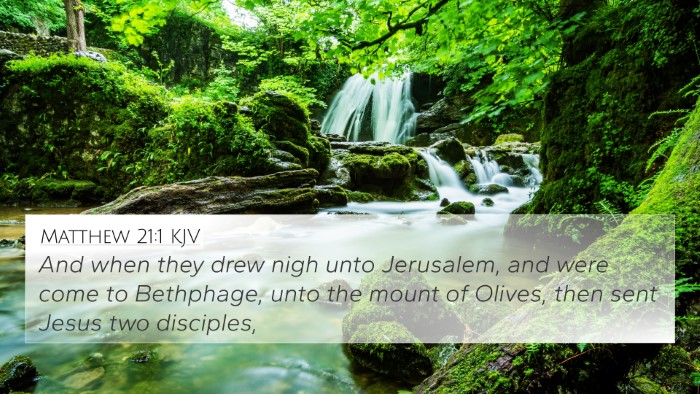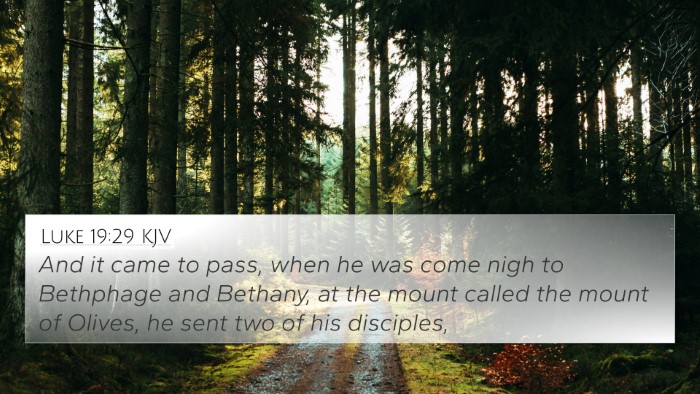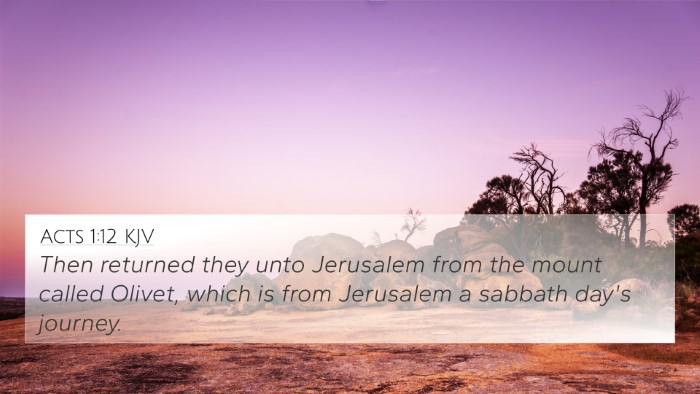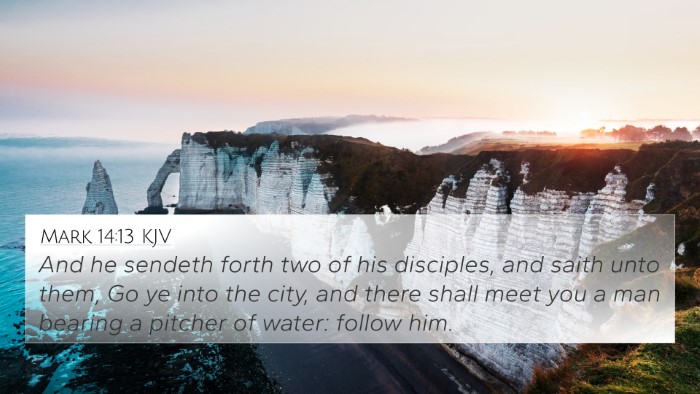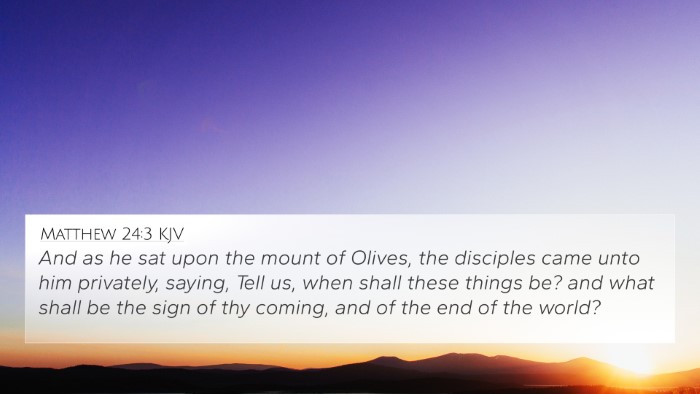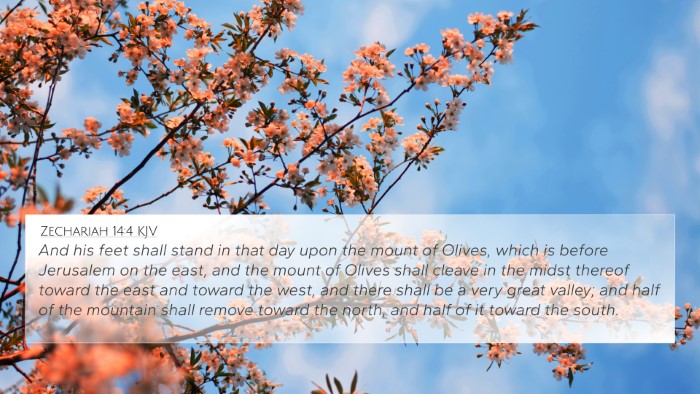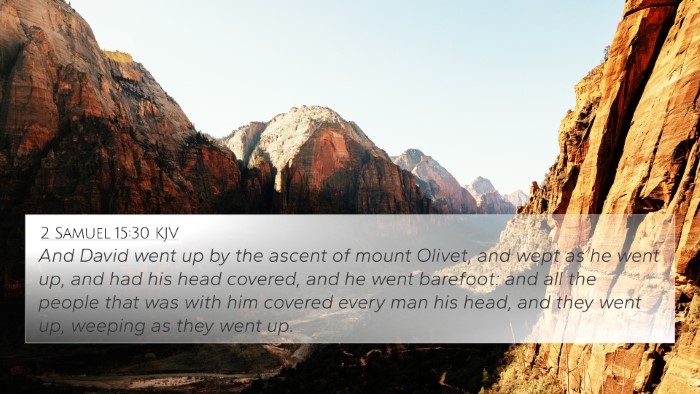Mark 11:1 marks a pivotal moment in the Gospel, closely linked to the events leading up to the triumphal entry of Jesus into Jerusalem. This verse serves as an introduction to a significant biblical narrative, demonstrating the deliberate actions of Jesus as he approaches the capital. By analyzing this verse through various public domain commentaries, we can unveil deeper meanings and connections with other scriptures.
Context and Location
Matthew Henry emphasizes the geographical significance of the locations mentioned: Bethphage and Bethany, situated near the Mount of Olives. Each place holds historical and spiritual relevance within the biblical narrative. Bethany is known as the home of Lazarus, Mary, and Martha, whereas Bethphage signifies 'house of unripe figs,' symbolizing unfruitfulness challenged by Jesus’ upcoming actions.
The Role of the Disciples
According to Albert Barnes, this passage illustrates the obedience and role of the disciples in executing Jesus' plan. The two disciples symbolize the collective effort of Jesus’ followers, who are critical in fulfilling the prophecy of His kingly approach to Jerusalem. This evokes the idea of prepared servanthood, wherein every disciple contributes to the manifestation of God's will.
Symbolism of the Mount of Olives
Adam Clarke delves into the symbolism of the Mount of Olives, emphasizing its eschatological significance. This location frequently appears in prophecies regarding the coming Messiah, indicating Jesus’ sovereign authority as He approaches Jerusalem. The mount also foreshadows His eventual return, enriching the verse's thematic ties to hope and redemption.
Cross-Referencing Biblical Texts
This verse serves as a gateway to understanding its relation to various other scriptures. Here are some important cross-references:
- Matthew 21:1-11 - Account of the triumphal entry.
- Luke 19:29-38 - Another perspective on the same event.
- Zechariah 9:9 - Prophecy about the coming King riding on a donkey.
- John 12:12-15 - Portraying the event with additional insights.
- Isaiah 62:11 - Prophetic declaration regarding the Savior's coming.
- Psalm 118:25-26 - The blessedness of the coming one.
- Matthew 16:21 - Foretelling Jesus' journey to Jerusalem.
- Mark 10:32 - Disciples' journey with Jesus towards Jerusalem.
- Acts 1:12 - The post-resurrection significance of the Mount of Olives.
- Ezekiel 11:23 - The glory of the Lord departing from the city.
Thematic Connections
The themes of obedience, prophecy fulfillment, and the Lord's authority resonate deeply through this verse. It creates threads that connect to major biblical events, showcasing a rich tapestry of faith and divine purpose.
Conclusion
Mark 11:1 is not just a historical account but a profound moment in scripture that lays the groundwork for understanding Jesus’ mission. Through comprehensive Bible cross-referencing, readers can explore the connections between this narrative and others within the Bible, thereby enriching their knowledge and appreciation of the text.
Using Tools for Bible Cross-Referencing
To further explore the surrounding themes and connections, various tools for Bible cross-referencing are available. Using a Bible concordance or a cross-reference Bible study guide can immensely enhance your understanding. Here are some methods to effectively use cross-references:
- Explore thematic Bible verse connections.
- Identify links between the Prophets and Apostolic teachings.
- Engage in a comparative study of Pauline epistles.
- Investigate Bible cross-references for sermon preparation.
- Utilize Bible reference resources for deeper insights.
- Practice cross-referencing Bible study methods for a comprehensive understanding.
Final Thoughts
As you study Mark 11:1 and its related scriptures, consider how each verse complements others in scripture and reinforces overarching theological themes. Delve deeper into the inter-Biblical dialogue created through scriptural cross-referencing, and allow these connections to enrich your faith journey.
